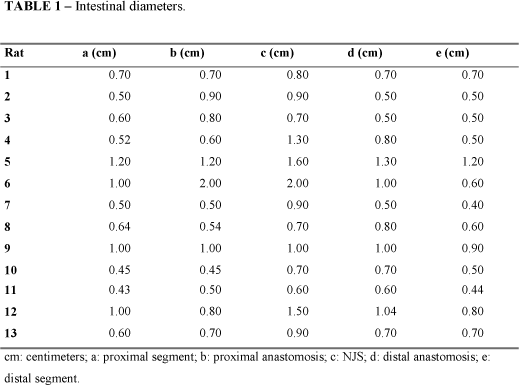Omentoenteropexy was developed as an alternative technique to promote neovascularization in an isolated bowel segment. OBJECTIVE: The aim of the present protocol was to study the long-term viability of an isolated jejunal segment following neovascularization by omentoenteropexy. Long-term survival of a neovascularized bowel segment is an indication that the utilization of this segment as an intestinal graft can be successful. METHODS: To test the proposed surgical technique, 13 Wistar rats were subjected to laparotomy, the jejunum was exposed at 20 cm from the angle of Treitz and a pedicle of greater omentum was isolated. An incision of 6 cm was made along the antimesenteric jejunal border, exposing the submucosa. Omentoenteropexy was performed between the incision of the jejunum and the pedicle of the greater omentum. After seven weeks, the mesentery of the jejunal segment subjected to omentoenteropexy was ligated and isolated from the rest of the jejunum by a complete proximal and distal transversal section. Subsequently, an end-to-end anastomosis was performed to restore the continuity of the bowel. RESULTS: At 10 weeks from the first surgical intervention, the isolated jejunal segment subjected to omentoenteropexy was completely neovascularized and viable. CONCLUSION: No evidence of anatomical or functional intestinal obstruction was observed.
Omentoenteropexy; Neovascularization; Rats



